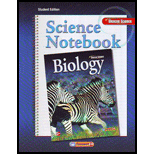
To compare:
The terms given in the table.
Introduction:
In the biological hierarchy, the organism is the smallest unit. An organism belongs to a single species and the members of a species make up the population. Many different populations of a particular region, which interact with one another make up a community. The community includes all the living organism and community along with all the abiotic factors of that region makes up an ecosystem. In the ecosystem, many factors act on a population to ensure the balance.
Explanation of Solution
Comparison between population density, dispersion, density-dependent and density-independent factors are given as follows:
| Population Density It is the number of individuals present per unit of a geographical area. | Dispersion It represents how an organism occupies the space in a habitat or a geographical region. |
| Density-dependent factors These are the limiting factors that depend on the density of the population present in a region. Generally, these are the factors that are used by the population as a resource, for example, food shelter, etc. | Density independent factors The density-independent factors are those limiting agents that are not dependent on the density or the number of individuals. For example, pH, temperature, and other natural disasters. |
Comparison between
Population growth rate: It is the rate at which the number of individuals increases in a given period of time.
| Emigration It refers to the migration of individuals that go out of the population to another location. | Immigration It refers to migration or the addition of individuals in a region from any other region. |
Carrying capacity is the maximum number of individuals in a population, which easily survive. It is the average
Additional Science Textbook Solutions
Anatomy & Physiology
Campbell Biology in Focus (2nd Edition)
Concepts of Genetics (12th Edition)
Biology: Life on Earth (11th Edition)
Human Anatomy & Physiology
Human Physiology: An Integrated Approach (7th Edition)
 Human Anatomy & Physiology (11th Edition)BiologyISBN:9780134580999Author:Elaine N. Marieb, Katja N. HoehnPublisher:PEARSON
Human Anatomy & Physiology (11th Edition)BiologyISBN:9780134580999Author:Elaine N. Marieb, Katja N. HoehnPublisher:PEARSON Biology 2eBiologyISBN:9781947172517Author:Matthew Douglas, Jung Choi, Mary Ann ClarkPublisher:OpenStax
Biology 2eBiologyISBN:9781947172517Author:Matthew Douglas, Jung Choi, Mary Ann ClarkPublisher:OpenStax Anatomy & PhysiologyBiologyISBN:9781259398629Author:McKinley, Michael P., O'loughlin, Valerie Dean, Bidle, Theresa StouterPublisher:Mcgraw Hill Education,
Anatomy & PhysiologyBiologyISBN:9781259398629Author:McKinley, Michael P., O'loughlin, Valerie Dean, Bidle, Theresa StouterPublisher:Mcgraw Hill Education, Molecular Biology of the Cell (Sixth Edition)BiologyISBN:9780815344322Author:Bruce Alberts, Alexander D. Johnson, Julian Lewis, David Morgan, Martin Raff, Keith Roberts, Peter WalterPublisher:W. W. Norton & Company
Molecular Biology of the Cell (Sixth Edition)BiologyISBN:9780815344322Author:Bruce Alberts, Alexander D. Johnson, Julian Lewis, David Morgan, Martin Raff, Keith Roberts, Peter WalterPublisher:W. W. Norton & Company Laboratory Manual For Human Anatomy & PhysiologyBiologyISBN:9781260159363Author:Martin, Terry R., Prentice-craver, CynthiaPublisher:McGraw-Hill Publishing Co.
Laboratory Manual For Human Anatomy & PhysiologyBiologyISBN:9781260159363Author:Martin, Terry R., Prentice-craver, CynthiaPublisher:McGraw-Hill Publishing Co. Inquiry Into Life (16th Edition)BiologyISBN:9781260231700Author:Sylvia S. Mader, Michael WindelspechtPublisher:McGraw Hill Education
Inquiry Into Life (16th Edition)BiologyISBN:9781260231700Author:Sylvia S. Mader, Michael WindelspechtPublisher:McGraw Hill Education





